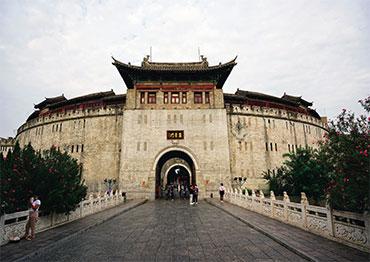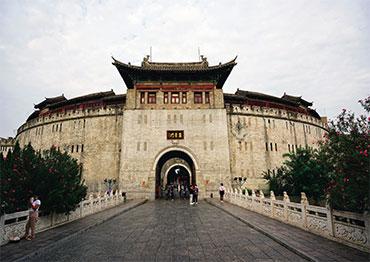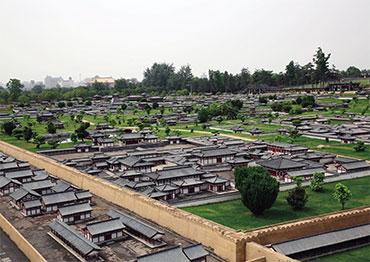Xi’an and Luoyang alternated as capitals for nearly 2,000 years, from the mid- 11th century BCE during the Western Zhou Dynasty until the early 10th century at the end of the Tang Dynasty.
Xi’an was first. It served as the Western Zhou’s capital for nearly 280 years. In 770 BCE, the year after the fall of the Western Zhou, the son of the last emperor moved the seat of power of his new kingdom to Luoyang. As Luoyang is to the east of Xi’an, the new kingdom was called the Eastern Zhou.
The Eastern Zhou, however, lost control of its vassal states. One of them, the Qin, was based in Xianyang, about 30 kilometers west of Xi’an, since the mid-4th century BCE. The Qin united China in 221 BCE and Xianyang became its capital. The Qin ruler’s main imperial palaces and the Terracotta Warriors are today administered by Xi’an. Today, both Xi’an and Xianyang claim the Qin capital.
The Qin created the imperial ruling system that would last for over 2,000 years in China. But the Qin itself was a short-lived dynasty. Just 15 years after the first Qin Emperor Shihuang was crowned, a rebellion force led by Liu Bang took Xianyang. Liu Bang’s ally Xiang Yu torched and destroyed the city. According to historian Sima Qian’s classic book Historical Records in the first century BCE, the fire burned for at least three months. But Xiang Yu eventually lost his rivalry with Liu Bang to rule China.
Liu Bang, founder of the Han Dynasty (202 BCE-220 CE), built a new capital in old Xianyang. He changed its name to Chang’an, which means “lasting peace and stability.” The name stuck for nearly 1,500 years up to the late 13th century during the Yuan Dynasty. It had different names over the next century until 1369, when Ming Dynasty founder Zhu Yuanzhang changed it to Xi’an – meaning “western peace.”
But the Han Dynasty ended much like the Zhou. More than 200 years after Liu Bang set up the Han, it was overturned in a coup. In the year 25, Liu Xiu, who was a royal descendant, launched a rebellion and seized power. He established the Eastern Han Dynasty with Luoyang as its capital. Liu Bang’s original dynasty became known the Western Han. The Eastern Han lasted nearly 200 years to the year 220.
The last years of the Eastern Han saw wars between regional powers. After years of chaos and conflicts, the Jin Empire ruled by the Sima family united China again from its capital in Luoyang. But after the Jin’s waning years in the early 5th century, China fractured again and was mired in war, with 10 kingdoms vying for supremacy. Among the five northern kingdoms, two based their capital in Luoyang and two in Xi’an.
In the late 6th century, the Sui Dynasty ended hundreds of years of chaos. However, it was short-lived, and was soon followed by the powerful Tang Dynasty (618-907). Both Xi’an and Luoyang served as their capitals for more than 300 years until the early 10th century.
Xi’an was a more important political center than Luoyang. However, Empress Wu Zetian, wife of the Tang Emperor Gaozong, crowned herself as the only female sovereign in China’s history in the late 7th century. During her 15 years on the throne, she preferred to live in Luoyang.
The area of China’s Central Plains refers to the middle and lower reaches of the Yellow River, a region long regarded as the political and cultural center of Chinese civilization. Luoyang is the region’s geographical center.
However, dynasties that made Luoyang their capital were often weaker and smaller than dynasties that chose Xi’an. This was the case for the Eastern Zhou and Eastern Han. Both were established by descendants of their namesake previous dynasties, the Western Zhou and Western Han. However, neither could recapture the power and prosperity of their predecessors. The Jin Empire that ended the Three Kingdoms Period (220-280) only survived 52 years. Its successor, the Eastern Jin, moved south and built its capital in Nanjing in 317.
As China’s eastern coast provided a natural boundary for early empires, the only possible way to expand was westward. Given this, many historians believe that dynasties with Xi’an as the capital were more ambitious and able to expand their governance than dynasties seated in Luoyang.
Xi’an is located slightly west of the center of the Western Han Dynasty. This facilitated the Western Han’s expansion. Emperor Wu extended Western Han territory in the 2nd century BCE to include part of China’s northwest today. As a result, the Silk Road grew to link China and Europe through Central and West Asia.
The end of the Tang Dynasty in 907 also meant the end to either Xi’an or Luoyang serving as capital, with the centers of power shifting to the east, south and north.

 Old Version
Old Version

